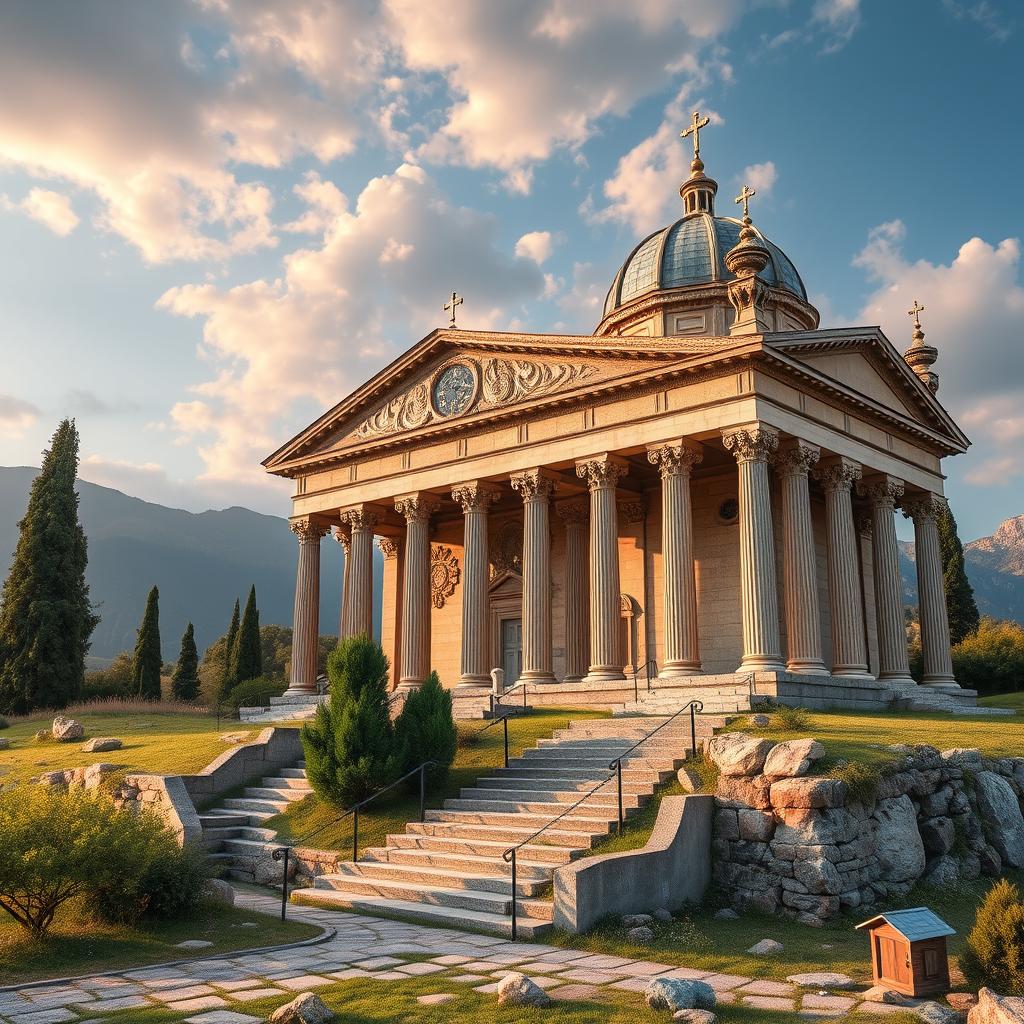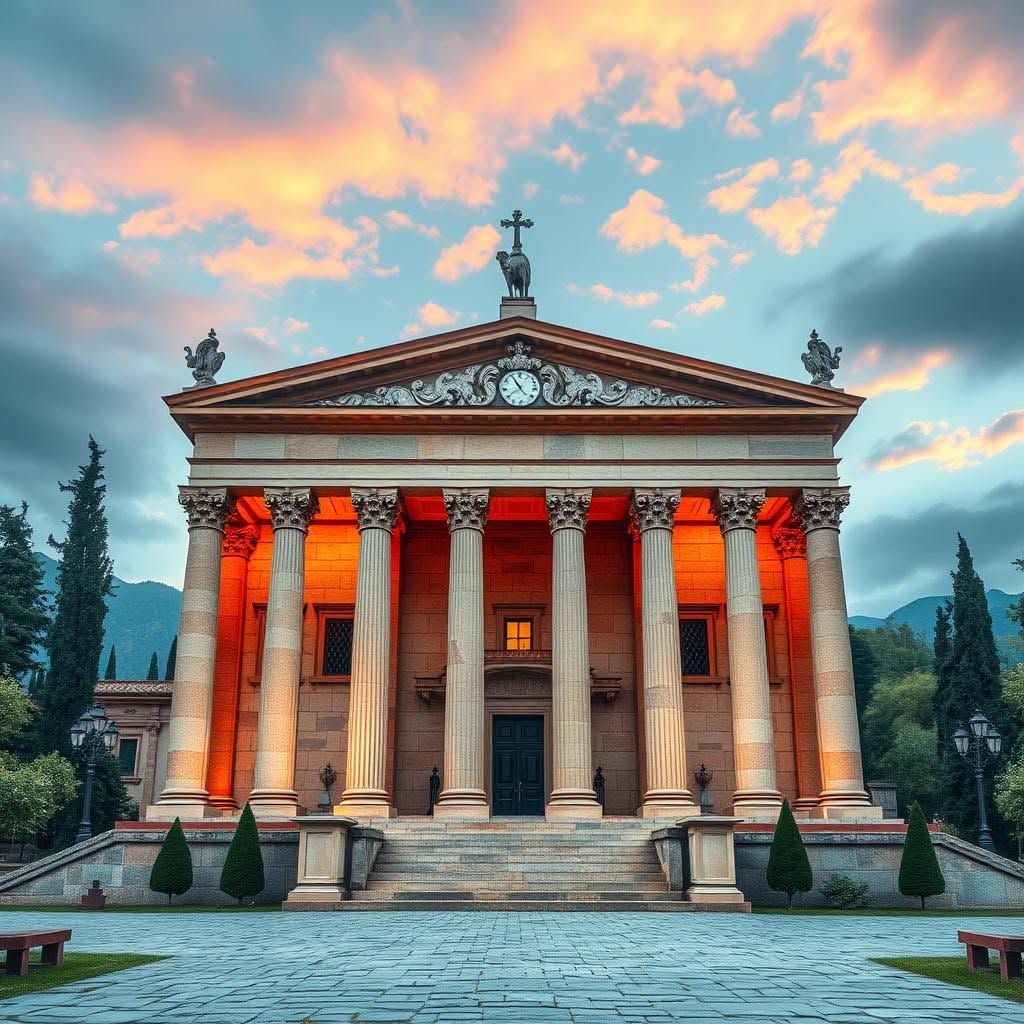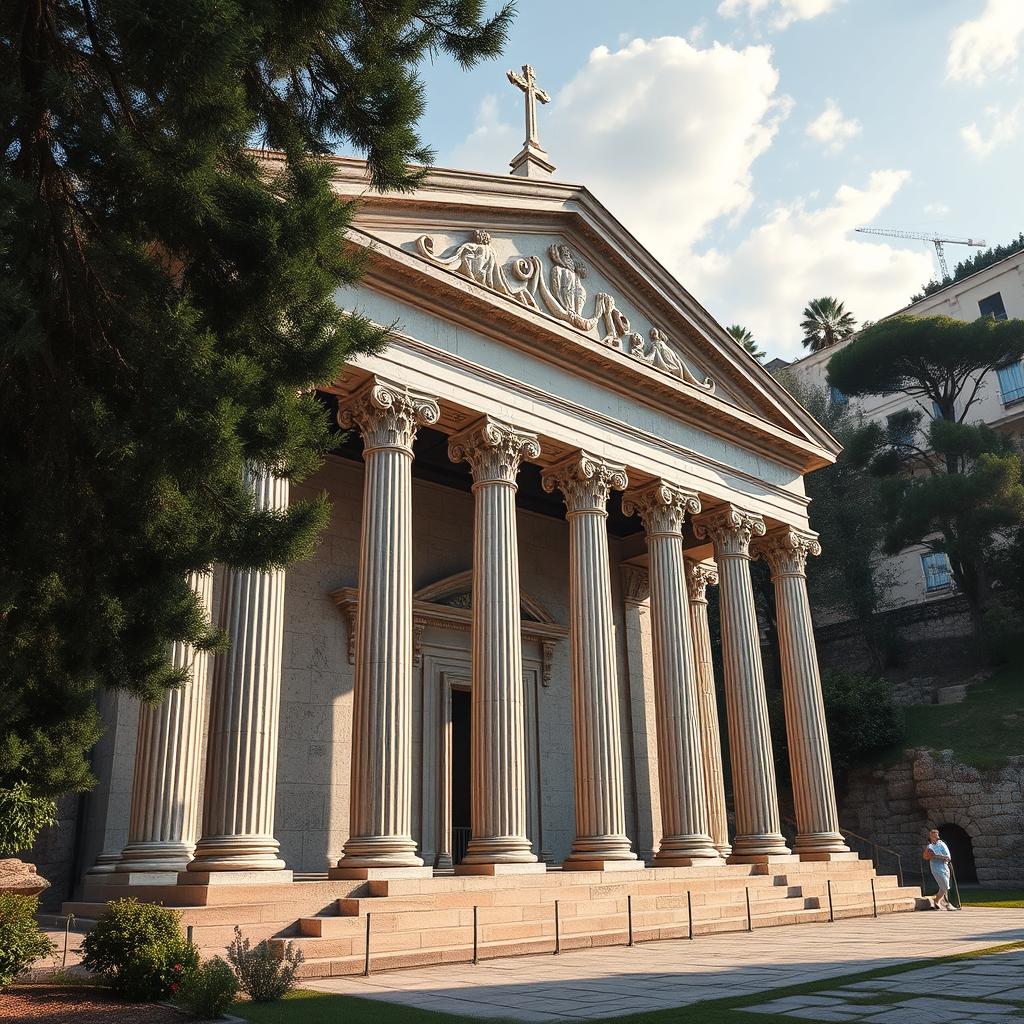The transformation from pagan temples to Christian basilicas is an important part of the history of sacred architecture. This change was not just an architectural trend but also a reflection of significant religious and cultural shifts during late antiquity and the early medieval period. Pagan temples, once the center of classical worship, gradually made way for Christian basilicas designed to accommodate new forms of liturgical practice and community gathering.
This article offers:
- A historical overview of pagan temples and early Christianity’s rise.
- Insights into social, political, and practical factors driving temple conversions.
- Case studies from Rome and other regions illustrating architectural adaptation.
- Examination of legal policies affecting sacred spaces.
- Discussion on reuse of temple materials in church constructions.
Understanding these transformations enriches your perspective on how sacred architecture embodies broader historical processes — telling stories not only of faith but also of community, power, and identity.

Historical Context of Pagan Temples and Early Christianity
Pagan worship in the Roman world was deeply rooted in the use of temples as central places for ritual, offerings, and community gatherings. Roman temples served not only as religious sites but also as symbols of civic pride and cultural identity. These structures were carefully designed to honor a pantheon of gods and goddesses, hosting ceremonies that reinforced social order and traditional values.
The rise of early Christianity introduced a new religious paradigm that both challenged and interacted with existing pagan traditions. Initially, Christians were a minority group often viewed with suspicion by Roman authorities and pagan practitioners alike. Their worship practices differed markedly, emphasizing communal prayer and gatherings outside conventional temple settings.
As Stoicism gained popularity in Roman culture, it influenced the thoughts and actions of important thinkers throughout the empire, further shaping the religious landscape. Cities became arenas for the coexistence—and sometimes tension—between paganism and Christianity. Urban centers still housed active temples where classical worship persisted while Christian communities met in private homes or adapted public spaces for their rituals.
Interestingly, some early Christians sought to redefine their relationship with these pagan temples. As discussed in this article on Jesus’ temple members, there were instances where Christians engaged with the temple system rather than completely rejecting it.
Religious practices overlapped in complex ways: some pagans tolerated Christian presence, others resisted it fiercely. This period set the stage for later transformations when the physical landscape of sacred architecture would shift dramatically to reflect changing beliefs. The art and culture during this time also played a significant role, with remarkable artistic expressions heavily influenced by earlier Greek and Etruscan traditions.
Exploring ancient Roman life is a captivating journey that reveals a complex history, vibrant culture, and intricate social structure.
Understanding Daily Life in Ancient Rome
For example, daily life in Ancient Rome differed greatly among various social classes. The wealthy patricians enjoyed a life of luxury and privilege, while the plebeians, who were the common people of Rome, faced a vastly different existence. Even though they held a lower status, plebeians played an essential role in society, and their experiences were vital to comprehending the larger social dynamics of that era.
The Impact of the Roman Army
Furthermore, the Roman Army played a significant role in shaping the empire’s borders and influence. The military strategies and operational effectiveness of this army were crucial in securing victories across extensive territories.
The Enduring Influence of Roman Law
In addition, the legacy of Roman law continues to resonate today as its principles still shape contemporary legal systems.
Experiencing History Through Digital Platforms
In today’s digital age, there are various ways to immerse yourself in these historical stories. One such medium is through role-playing games like Second Life, where players can actively participate and experience life in ancient Rome firsthand. This interactive approach brings history to life in a unique and engaging manner.

Notable Examples of Temple-to-Basilica Conversions in Rome
The Pantheon conversion stands as one of the most iconic examples of transforming pagan temples into Christian basilicas. Originally constructed as a temple dedicated to all Roman gods, the Pantheon was consecrated as the church of Santa Maria ad Martyres in 609 AD. This adaptive reuse preserved its monumental dome and classical architecture while reorienting its purpose toward Christian worship, showcasing how sacred spaces could be repurposed rather than demolished.
Several documented temple conversions in Rome include the transformation of Mithraea sanctuaries—underground temples devoted to the god Mithras—into Christian worship sites. These conversions illustrate how even smaller, more secretive pagan cult spaces were incorporated into the Christian urban fabric, reflecting changing religious demographics and practices.
Transformations around the Roman Forum during the 6th and 7th centuries further highlight this trend. Temples that once symbolized imperial and pagan authority were systematically converted or adapted for Christian use. The reuse involved structural modifications that aligned these buildings with emerging liturgical needs while maintaining their central role within urban life.
These examples from Rome emphasize a pattern: sacred architecture evolved not through destruction but through integration and adaptation, marking a physical and symbolic shift From Pagan Temples to Christian Basilicas: Transformations in Sacred Architecture.
This period also coincided with significant societal changes, including shifts in entertainment practices as seen in the spectacle of ancient Rome, where activities like gladiator games and chariot races played a crucial role in society. Such events not only entertained but also had significant effects on social relationships and political authority.
The influence of Ancient Rome extends beyond just architectural transformations; it has also shaped various aspects of modern society, as observed in the legacy of ancient Rome. This legacy remains a cornerstone of Western civilization, profoundly influencing culture, governance, and innovations.
Moreover, agriculture’s role during the Roman Republic and Empire was a crucial driver of economic and social development. This sector extended beyond mere food production, influencing various facets of life.
Lastly, it’s worth noting that the legal status of Roman women during this era reflected a complex interplay of rights and restrictions that significantly influenced gender dynamics in ancient Rome. Their citizenship was intrinsically linked to their relationships with men, such as fathers or husbands.
The history of ancient Rome is a fascinating journey that encompasses various aspects such as law, governance, religion, and the rise and fall of an empire.
The Twelve Tables: Codifying Roman Law
One significant milestone in the development of Roman law was the creation of the Twelve Tables between 451-450 BCE. These laws were the first attempt to codify the complex and often arbitrary legal practices of ancient Rome.
Transition from Monarchy to Republic: The Structure of Power
The structure of power during the Roman Republic (509 to 27 BCE) marked a significant transition in governance from monarchy to a complex political structure. This system laid the foundation for modern democracies and established key principles of governance that resonate today.
Ancient Roman Religion: A Comprehensive System
Moreover, the religious practices of the Romans were not merely a set of beliefs but a comprehensive system that intertwined with every aspect of their lives. This ancient Roman religion served as a cornerstone of Roman identity, influencing politics, culture, and social structures.
The Rise and Fall of Rome: An Indelible Mark on History
Finally, the history of Rome is also characterized by its rise and fall, which spanned over a millennium. This ancient civilization has left an indelible mark on the world, shaping politics, culture, and society in ways that continue to resonate today. The Roman Empire was not merely a political entity; it was a tapestry woven from diverse cultures, languages, and traditions.

Architectural Changes During the Transition
Christian worship introduced new liturgical requirements that demanded significant architectural modifications to existing pagan structures. Pagan temples, often designed as enclosed sanctuaries focused on ritual offerings and processions around a cult statue, contrasted sharply with Christian needs for congregational gathering, preaching, and sacramental rites.
Key architectural changes included:
- Spatial reorganization: Pagan temples typically featured a small inner cella and an open courtyard. Christian basilicas prioritized large, longitudinal naves to accommodate seated or standing congregations.
- Introduction of the apse: A semi-circular apse became a defining element at the basilica’s eastern end, housing the altar and serving as the focal point for liturgical ceremonies.
- Addition of aisles and narthexes: These areas facilitated processions and separated different groups of worshippers, reflecting hierarchical liturgical practices.
- Use of clerestory windows: Elevated windows allowed natural light to illuminate sacred spaces symbolically.
Christian basilicas represented permanent structures dedicated to ongoing prayer and community worship, contrasting with pagan temples often used intermittently for specific rites or festivals. The basilica design emphasized accessibility and unity within the congregation rather than restricted access to a sacred inner chamber.
Regional variations appeared as adaptations interacted with local traditions. In Syria, for instance, conversions involved careful preservation of some temple elements while modifying interiors to fit Christian rituals. The Temple of Bel in Palmyra was transformed into a basilica-like structure without reusing prominent pagan architectural features but integrating new forms aligned with Christian worship standards.
These architectural transformations illustrate how physical space was reshaped to embody evolving religious identities and practices. This shift in architectural style is reminiscent of the broader changes that occurred during Roman times, known for their masterpieces of ancient engineering, which not only served functional purposes but also stood as symbols of power and cultural identity. The influence of Roman engineering feats can be seen in these adaptations, ensuring effective governance and cultural exchange across regions. Additionally, figures like Scipio Africanus, who played a crucial role in shaping Roman history, indirectly influenced these architectural transformations through their contributions to Rome’s dominance and stability in the Mediterranean region.

Reuse of Materials from Pagan Temples in Church Construction
The practice of spolia—reusing building materials quarried from older pagan temple ruins—became widespread during the 8th and 9th centuries. This method was not only practical but also loaded with symbolic meaning in the context of From Pagan Temples to Christian Basilicas: Transformations in Sacred Architecture.
Practical aspects
Quarrying temple ruins provided readily available, high-quality stone and decorative elements such as columns, capitals, and friezes. Transporting new materials was expensive and labor-intensive; reusing existing components sped up construction and reduced costs.
Symbolic aspects
Incorporating spolia into Christian buildings physically manifested the triumph of Christianity over paganism. These reused elements transformed pagan artistic motifs into Christian sacred spaces, reflecting a continuity and reinterpretation rather than complete erasure.
Examples across Europe demonstrate how churches incorporated fragments from classical temples—sometimes visibly, sometimes reshaped—to serve new religious functions. This material reuse reinforced the architectural and ideological shift while preserving a tangible link to the past. Such transformations are detailed in studies like From Pagan Temples to Christian Basilicas: Transformations in Sacred Architecture which explore the profound implications of these architectural changes.
Conclusion
The journey From Pagan Temples to Christian Basilicas: Transformations in Sacred Architecture unveils a layered sacred architecture legacy shaped by complex religious, social, and political dynamics. These transformations are not merely about replacing one faith with another but illustrate a nuanced historical transformation where space, materials, and meaning were repurposed to fit evolving communal identities.
Understanding these shifts enriches our appreciation of religious heritage as a living dialogue across centuries, emphasizing continuity alongside change. This perspective encourages you to see sacred buildings not just as static monuments but as dynamic witnesses to the unfolding story of cultural and spiritual evolution.
Moreover, this journey is not just confined to the architectural realm. It also offers an opportunity for exploring ancient Rome, a city that began as a small settlement along the Tiber River and evolved into one of the most powerful empires in history. This evolution was not only marked by conquest and expansion but also by innovation, culture, and governance that have left an indelible mark on the world.
Furthermore, understanding the transition from monarchy to a republican system during the birth of the Roman Republic is essential for grasping the complexities of Roman governance and its enduring impact on modern political structures.
FAQs (Frequently Asked Questions)
What is the significance of transforming pagan temples into Christian basilicas in sacred architecture?
The transformation of pagan temples into Christian basilicas represents a pivotal shift in religious and cultural history, showcasing how sacred architecture evolved to reflect the rise of Christianity and its adaptation within existing urban and social frameworks.
How did early Christianity coexist with pagan worship practices in urban centers?
Early Christianity initially coexisted with pagan worship by sharing urban spaces where pagan temples served as centers for classical worship. This coexistence involved both tension and gradual integration, influencing religious practices and architectural developments.
Why were pagan temples converted into Christian basilicas instead of being destroyed?
Pagan temples were often converted rather than destroyed due to pragmatic reasons such as communal needs, social and political influences, and urban planning considerations. This adaptive reuse allowed for efficient use of existing structures while accommodating new liturgical requirements.
Can you provide notable examples of temple-to-basilica conversions in Rome?
Notable examples include the Pantheon’s conversion into the Christian church Santa Maria ad Martyres, adaptations of Mithraea sanctuaries, and transformations around the Roman Forum during the 6th and 7th centuries, illustrating significant shifts in sacred architectural use.
What legal and political factors influenced the transformation of pagan temples during the rise of Christianity?
Roman law provided legal protections for pagan temples despite their disuse, while Emperor Theodosius’ policies banned pagan rituals without mandating temple destruction. These frameworks facilitated adaptive reuse strategies like filling temples with rubble to serve as foundations for new constructions.
How were architectural designs adapted during the transition from pagan temples to Christian basilicas?
Architectural adaptations included modifications to meet Christian liturgical practices, shifting from ephemeral worship spaces to permanent basilica designs focused on prayer. These changes are evident across various regions, including Syria, reflecting evolving religious functions in sacred architecture.

